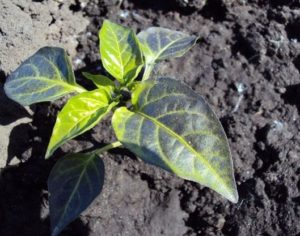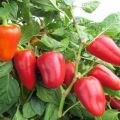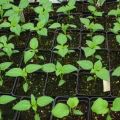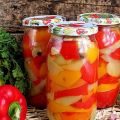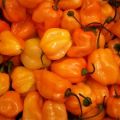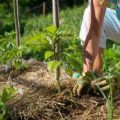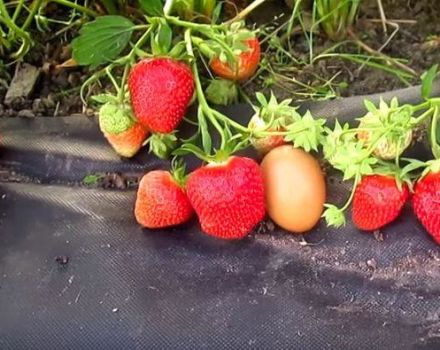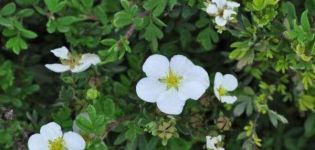Characteristics and description of the Swallow pepper variety, its yield
The Swallow pepper was bred by individual selection from Moldova 118 variety. It was grown in 1974. Reviews of the pepper are positive, the variety gives fruits large in size and sweet in taste. Pepper is loved by gardeners for its immunity to diseases, even to verticillium and bacterial wilting. The plant is resistant to attacks of parasites.
Biological features of the bushes
Description of the variety - the Swallow pepper is semi-sprawling, standard bushes, 54 - 62 cm high, because of this they need to be tied up. With careful care, 2.7 - 6 kg of fruits are harvested from 1 m². This is a mid-season variety, since 116 - 121 days pass from germination to harvesting.
Description of fruits
Fruit characteristic - peppers have thick walls, up to 5 mm at technical ripeness, up to 7 mm at full ripeness. The fruits have the shape of oval cones. When picking, tomatoes are light green, and when they ripen, they become scarlet. Each pepper weighs 65 - 100 g.
The length of the fruit is about 8 - 11 cm. The collected peppers are eaten raw, added to salads, stuffed, stewed, canned. They have a delicate, but rather dense skin, so the fruits are easy to transport, the peppers are preserved for a long time.
Sowing seeds
Growing begins with sowing seeds for seedlings at the end of February. For sowing, select the best seeds, place them in a solution of potassium permanganate for disinfection, soak them in phytopreparations: agave juice, Epins-Extra, Kemir. Then sprout the seeds by sprinkling on damp gauze and placing in a warm place.
Prepare a box or peat pots, fill with earth. You can buy pepper primer from the store. Be sure to steam the earth or warm it up in the oven. If you are sowing seeds in one box, then spread them, making an indent between them in 1.5 - 2 mm. Powder it on top with a layer of 8 - 10 mm. After sowing the seeds, the box or pots are thoroughly watered and covered with polyethylene film or glass. They are placed in a warm and bright place with an air temperature of +23 - 25 ° C.
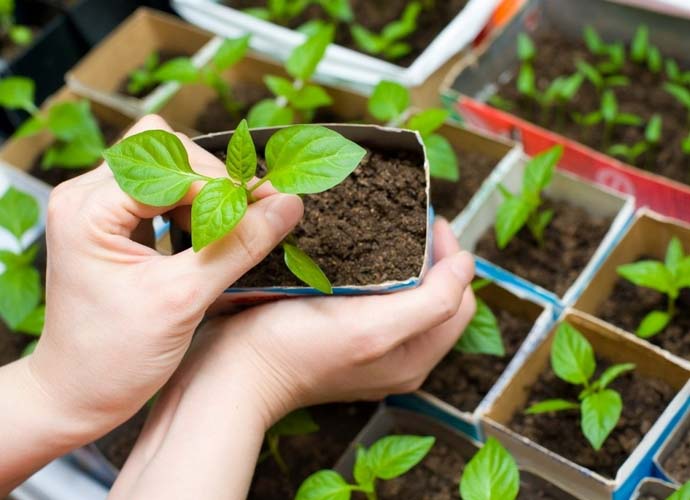
Remove the glass or film when the first shoots appear. Keep an eye on the moisture content, the soil should not be too wet, too dry. It is best to water using a spray bottle to avoid washing away the seeds. If the seeds were sown in one box, then in April dive the seedlings into separate containers.
The seedlings are fertilized for the first time when 3 - 4 leaves grow. For top dressing, 15 g of potassium salt, 25 g of carbamide, 60 g of superphosphate are poured into a 10-liter bucket half filled with water. Stir the composition thoroughly and water the seedlings.
When 4 - 5 leaves grow on seedlings, it is required to additionally illuminate the pepper with fluorescent lamps, the bush should be illuminated for 12 hours a day. The seedlings are gradually hardened by exposing them to the balcony, first for 1 - 2 hours, then for the whole day, and at night they are brought into the apartment.
Planting seedlings in a permanent place
Seedlings are planted on the site in late May or early June. They select a place where cucumbers, cabbage, beets, onions, carrots, pumpkins, legumes (except for beans) grew before. It is not advised to plant peppers in the area where other nightshades grew last year: eggplants, tomatoes, potatoes, peppers, since everyone has similar diseases and loves the same types of pests. In the fall, they dig up the soil, apply fertilizers. In the spring they re-dig.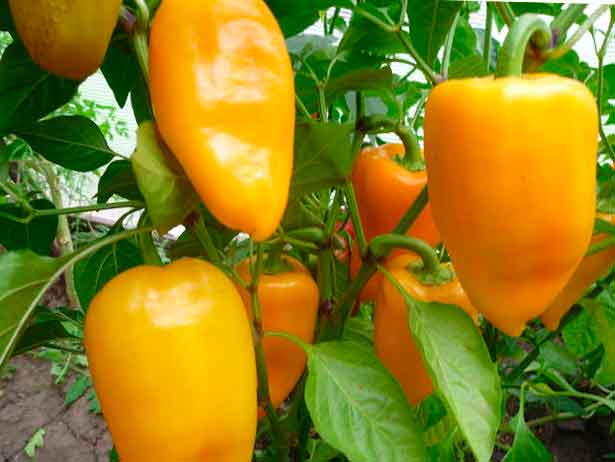
For planting seedlings, holes are pulled out, making an indent between the holes 40 cm in one row and a row spacing of 60 cm. Each hole is covered with nutrient soil up to half. Seedlings are placed, the roots are carefully straightened, covered with soil. It is required to make sure that the root part after planting protrudes above ground level. Then the plantings are thoroughly watered. Bushes are tied to pegs.
Bush care
Pepper needs to be watered constantly. It is better to mulch the soil with rotted sawdust - this will slow down the drying of moisture and the growth of weeds. It is required after watering to loosen the soil to a depth of about 7 - 9 cm, pull out weeds.
Important! You should not plant sweet bell peppers and bitter peppers next to it, since when the bell peppers are over-pollinated, the vegetable can become somewhat bitter.
Feed the pepper 3 times per season:
- 3 - 4 weeks after disembarking the seedlings to a permanent place;
- at the beginning of filling the ovaries;
- at the end of summer, when the fruits become smaller.
Fertilize by making such dressings:
- 5 parts of water are added to 1 part of manure.
- Pour 1 kg of chicken manure into a ten-liter bucket of water.
- Pour 19 g of ammonium nitrate, 18 g of potassium chloride, 45 g of superphosphate into a ten-liter bucket of water. Ten liters of the resulting solution is used for 8-11 bushes.
- They are fed with the "Growth" preparation.
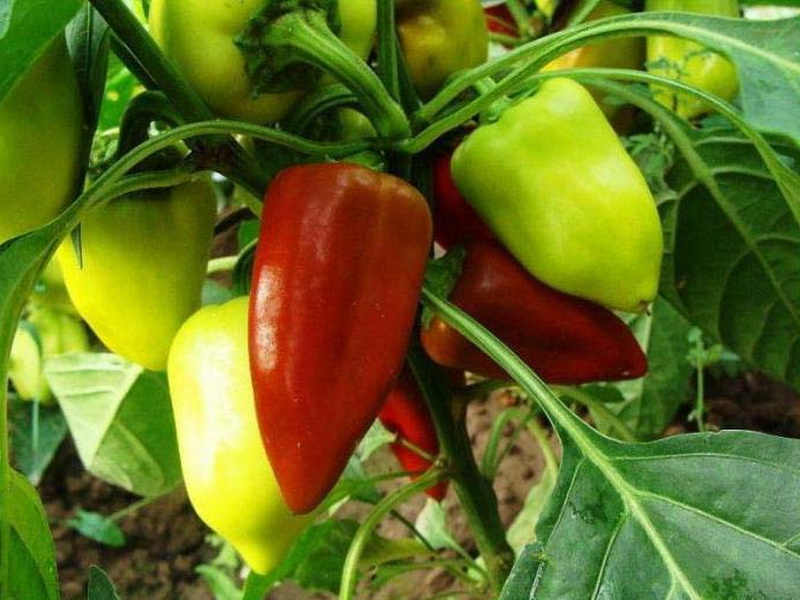
2 weeks after the ovaries appear, feed the bushes with Ideal fertilizer. Collect ripe peppers in a timely manner, then new ovaries will form faster, the fruits will gain weight more quickly. If you pick the fruits a little unripe, then the yield of the plant will increase.
How to increase the yield from a bush
To get the maximum yield, the following conditions must be met:
- The stakes, to which the peppers are then tied, are driven into the soil before planting the seedlings, then its root system will not be damaged.
- Although the culture loves watering, with constant rains, it is required to cover the bushes with plastic wrap, then the plants will not start to rot.
- To increase the yield, it is advised to pick the first flower that appears at the upper fork of the branches.
- First, the peppers are harvested at their technical maturity, and then - when the vegetables are absolutely ripe.
- Do not plant bell peppers and hot peppers nearby, as after pollination, bell peppers can taste bitter.
At the end of August, it is advised to cut off all flowers from the bushes, then the peppers will be larger, juicy and fleshy. Since fruits can grow on the bushes up to frost, then pick off some unripe fruits from the bushes - the rest will fill up and gain weight faster.
The pepper reviews are pretty rave. Its seeds have a high germination capacity for a long time. It's easy to care for the culture. If you follow the rules for growing crops from the bushes, you can collect a lot of fruits. The variety is quite popular, many gardeners planted pepper.
